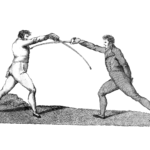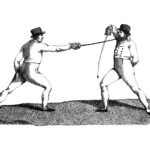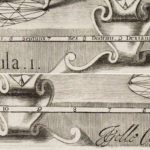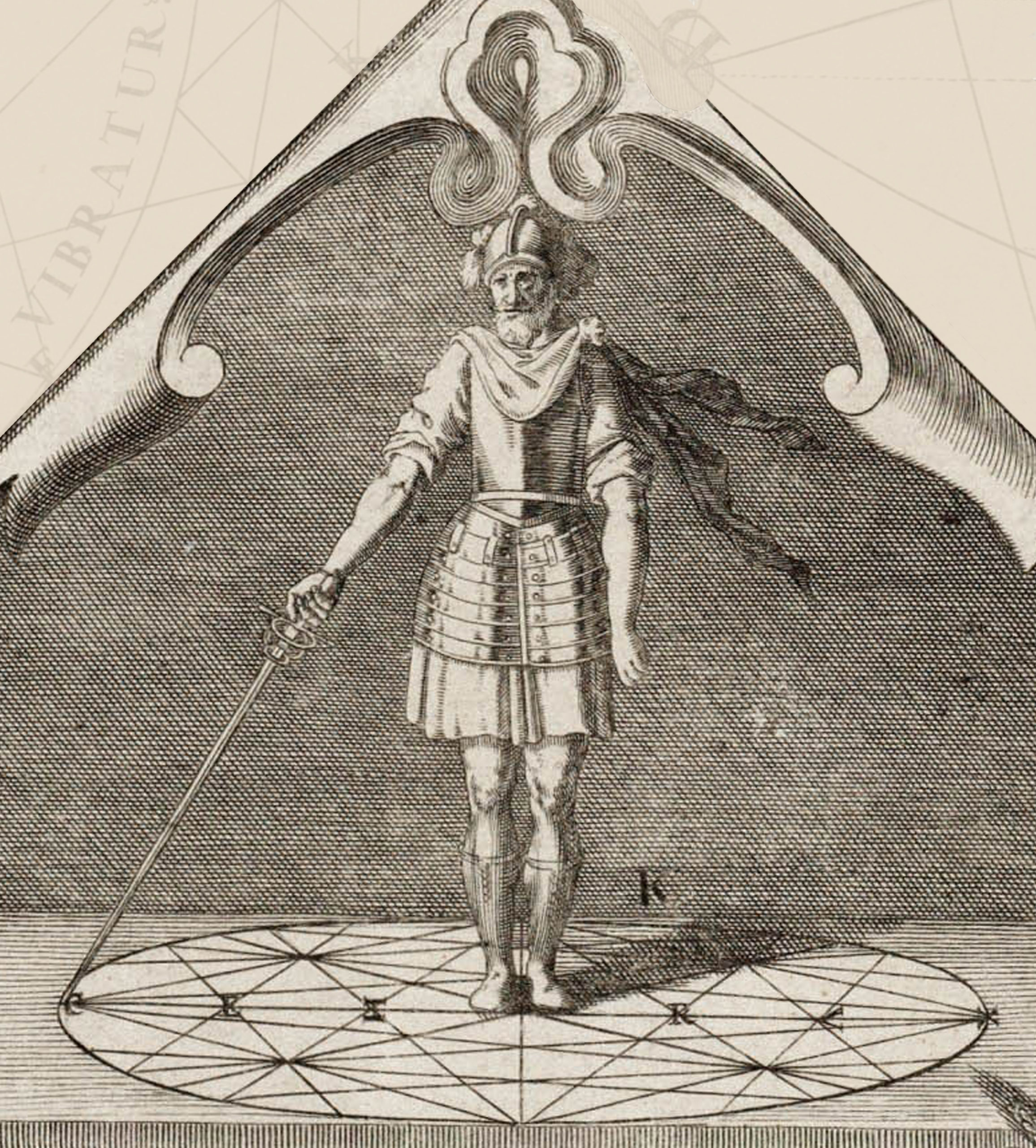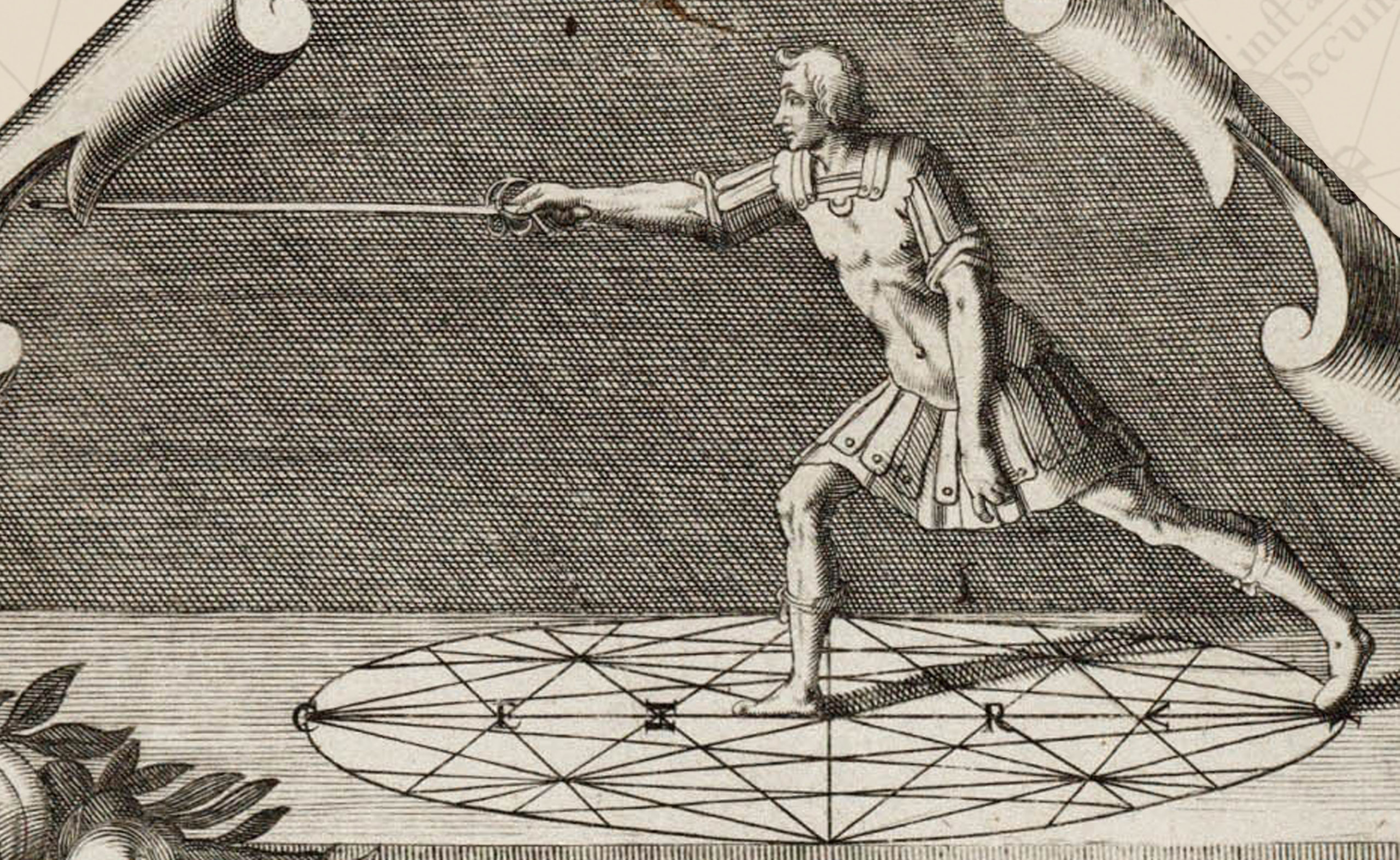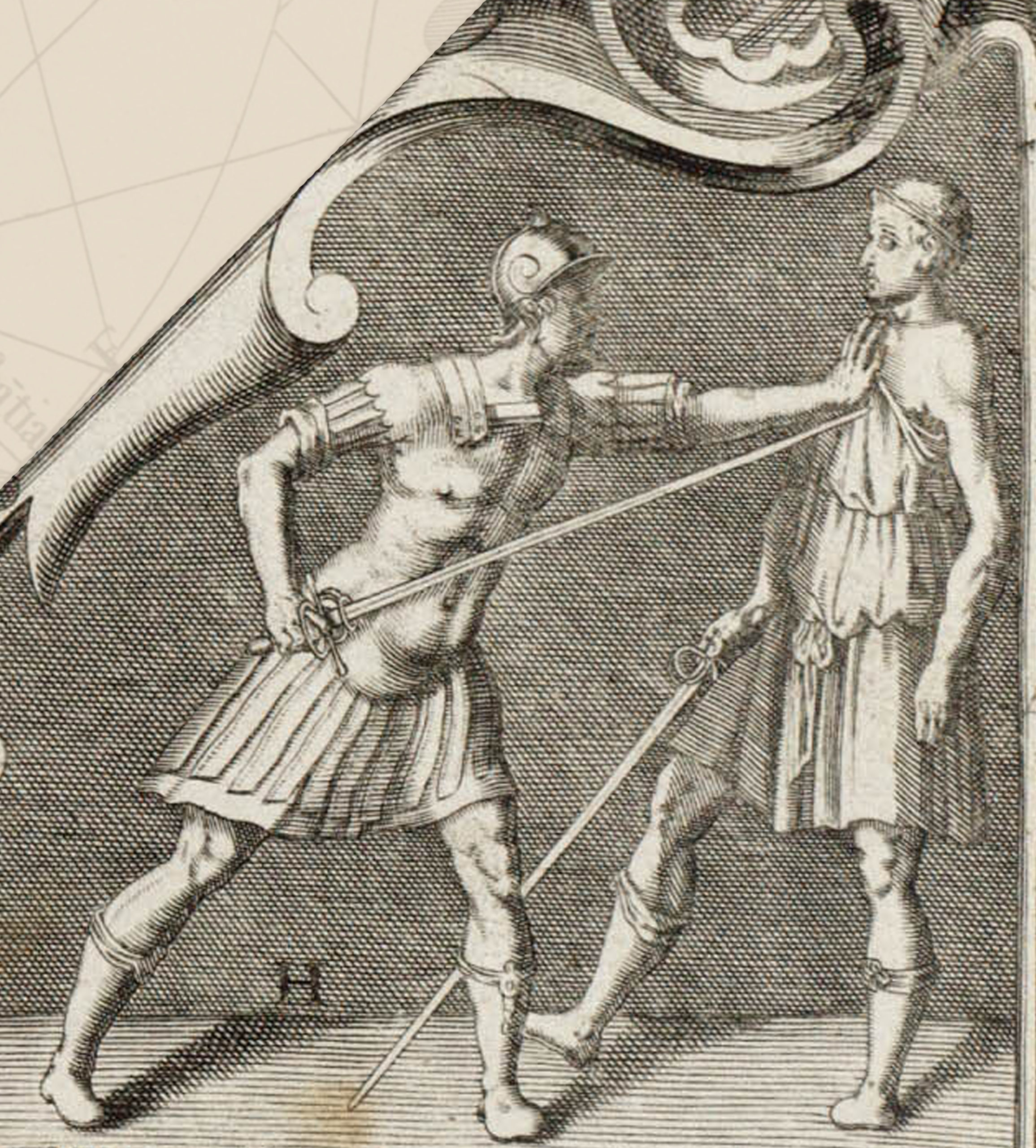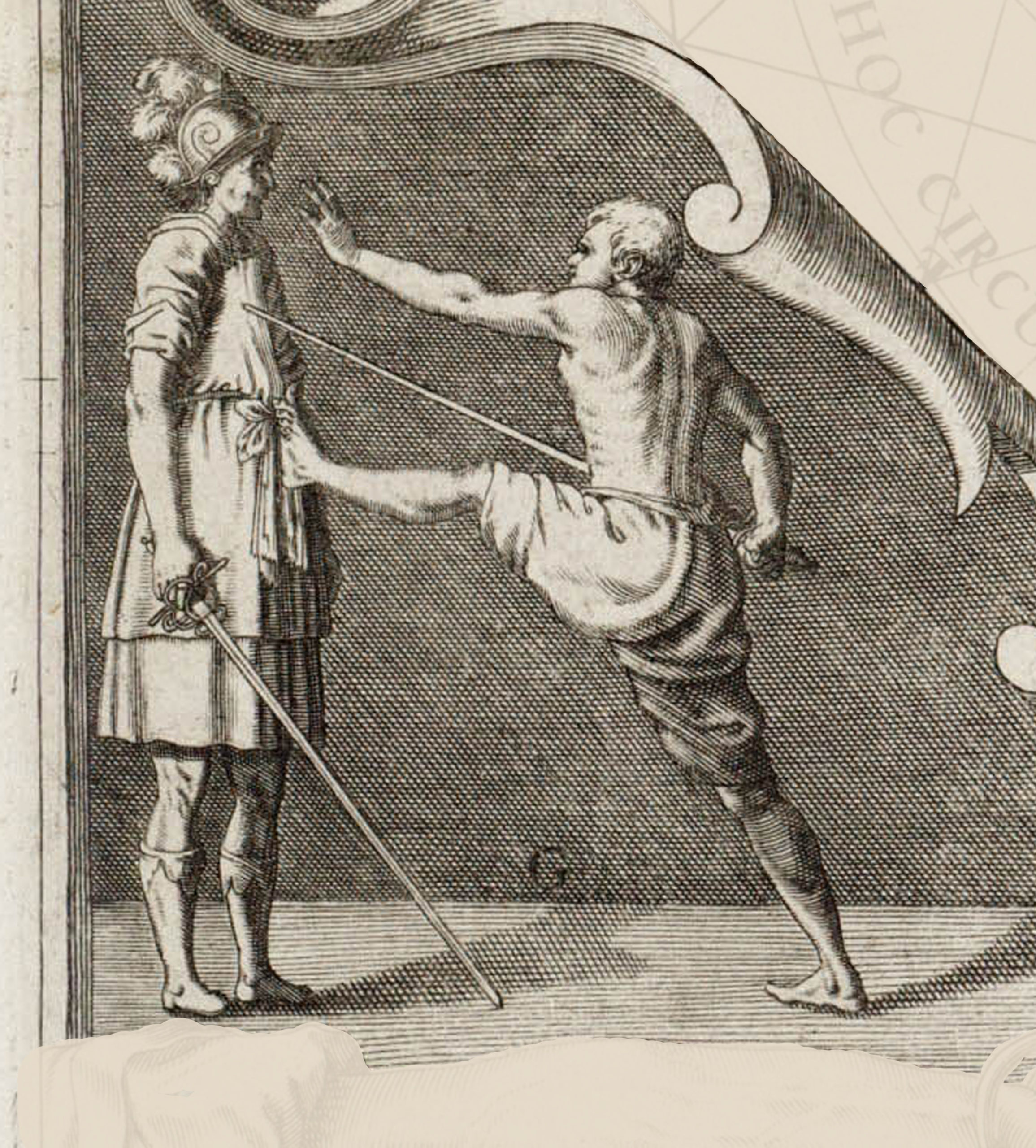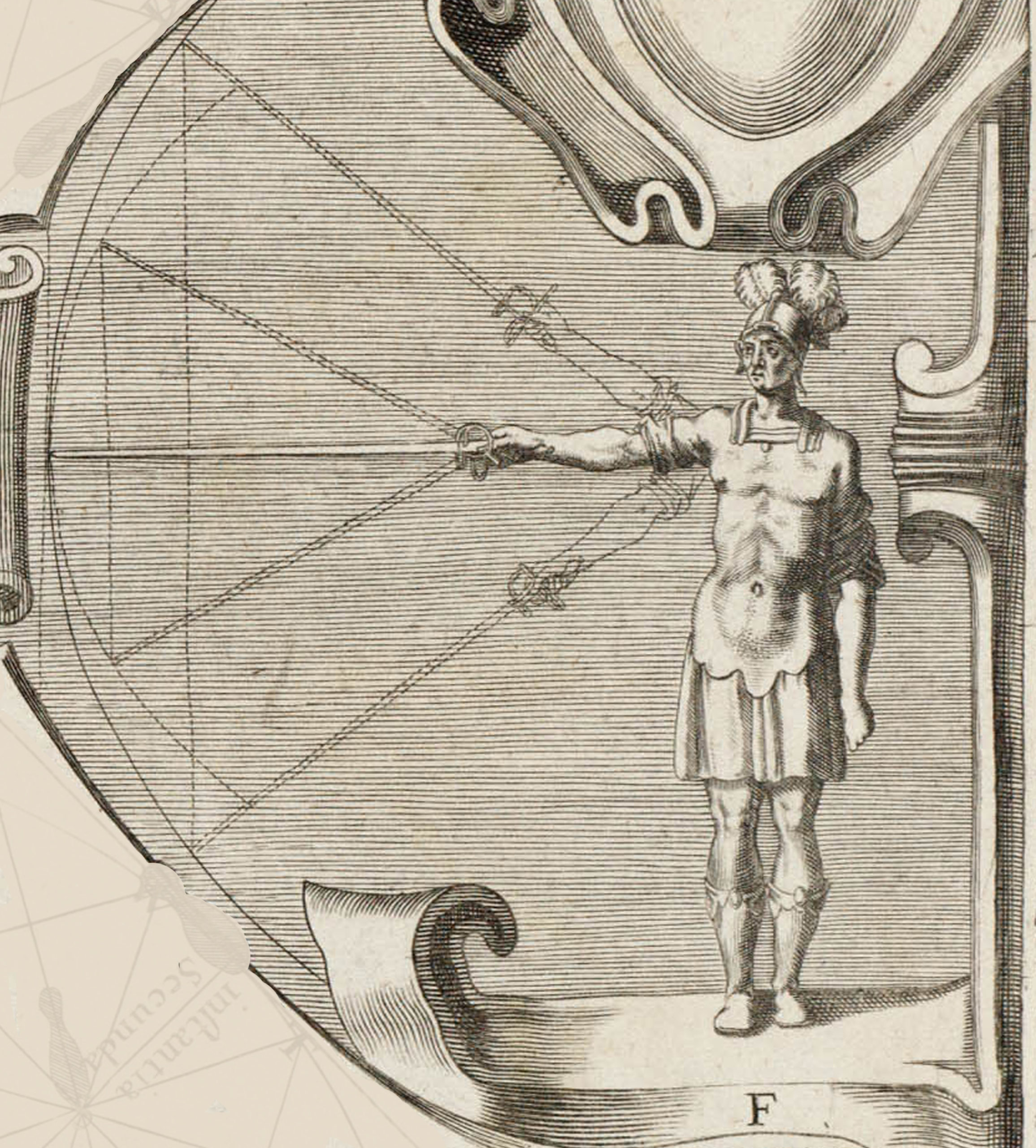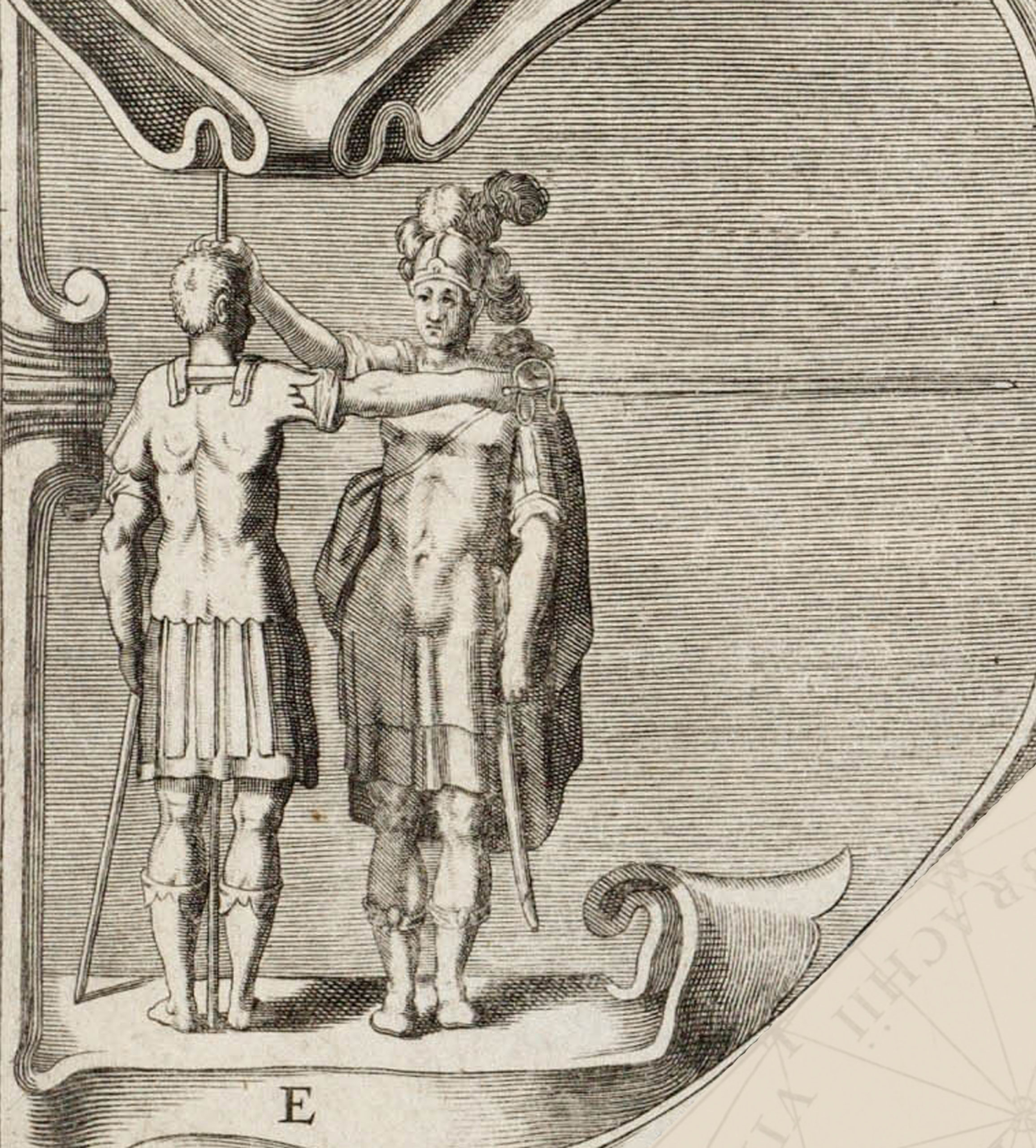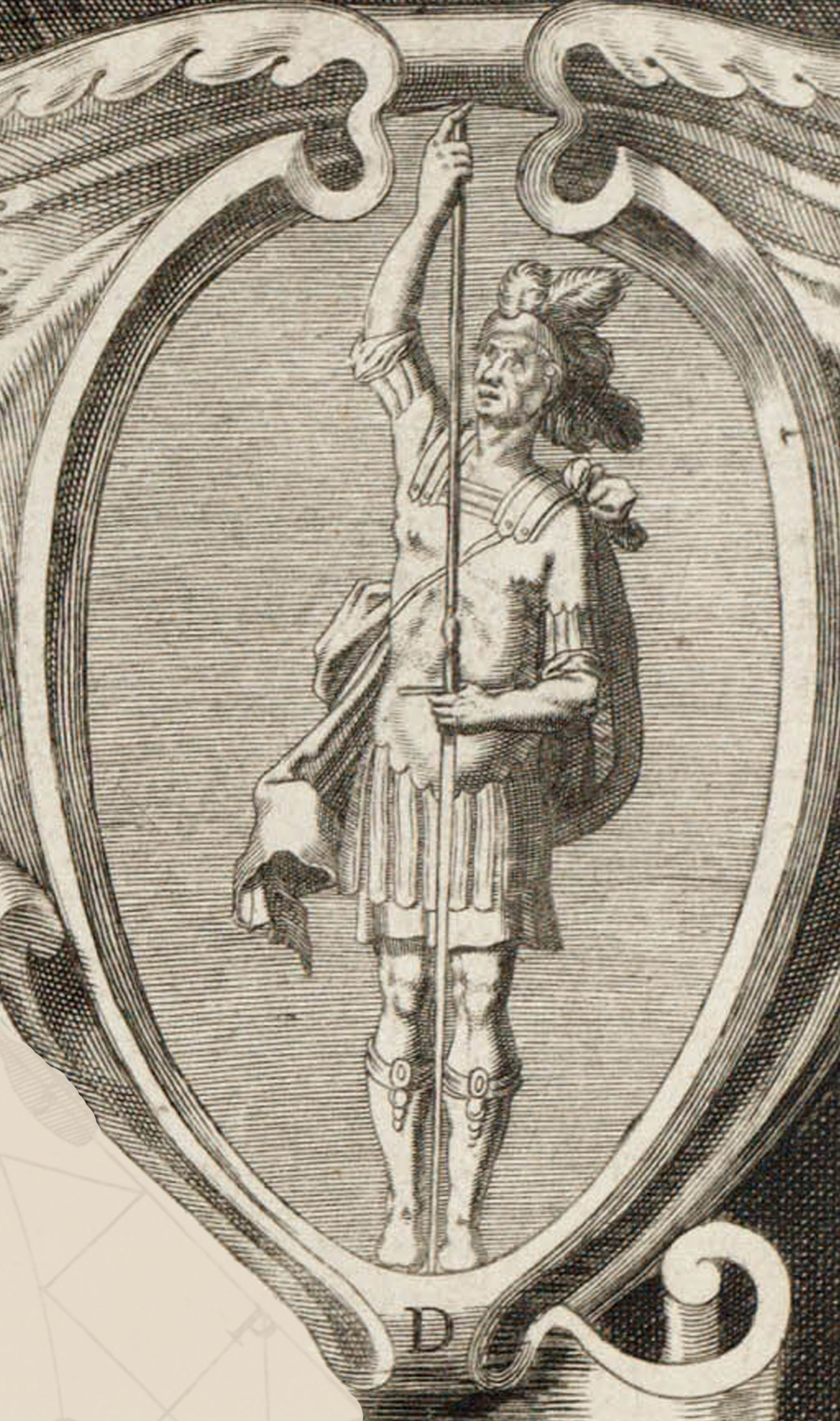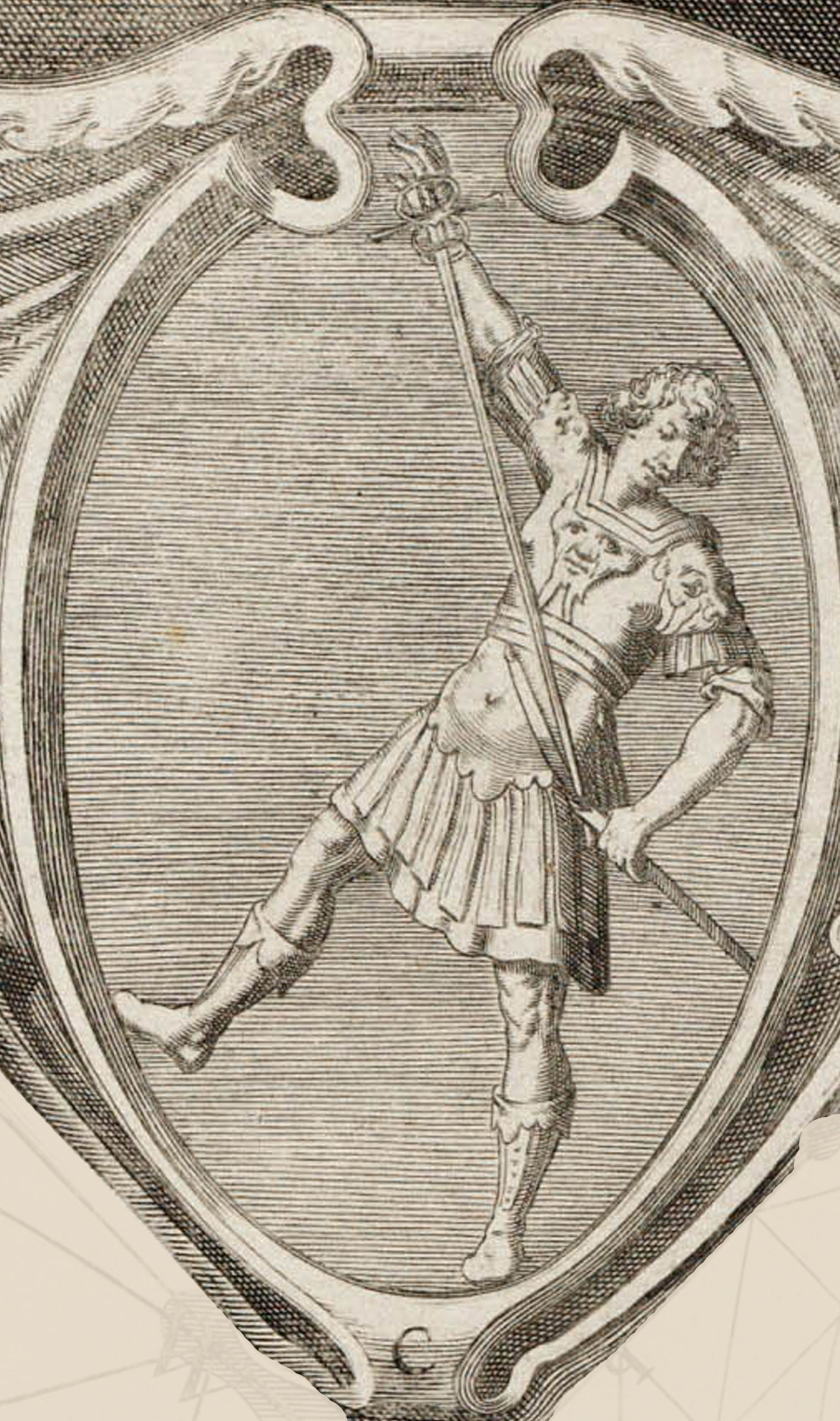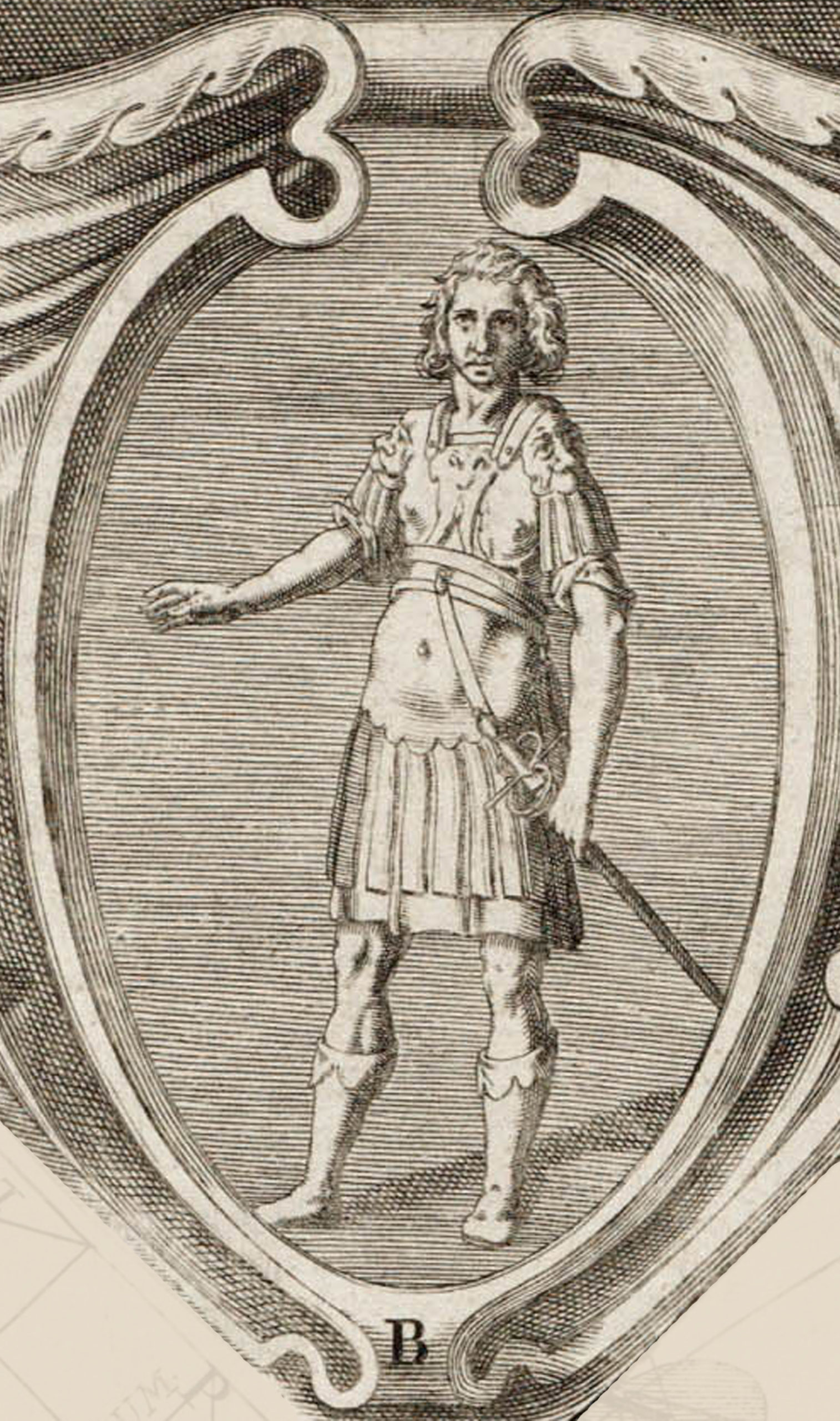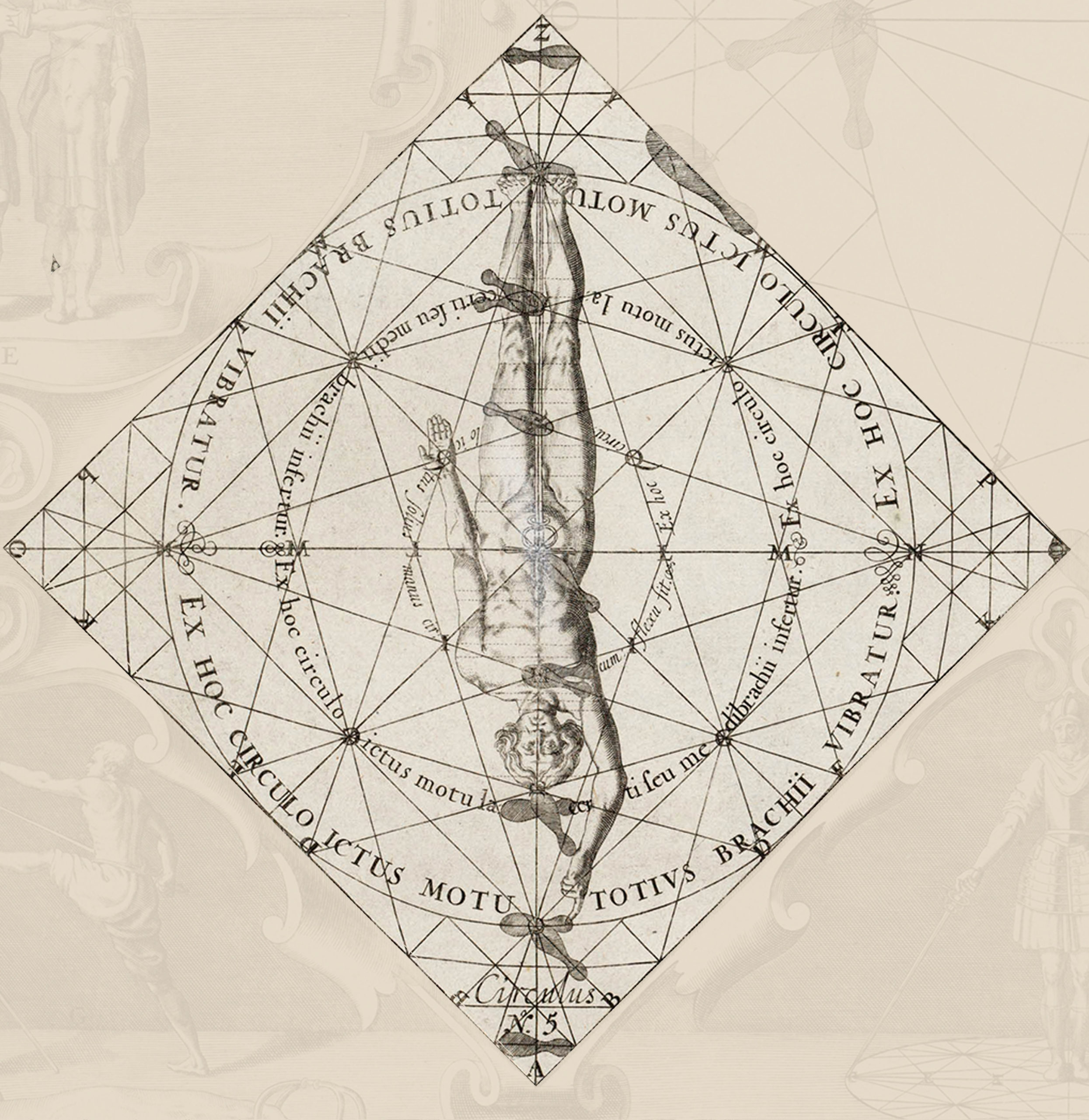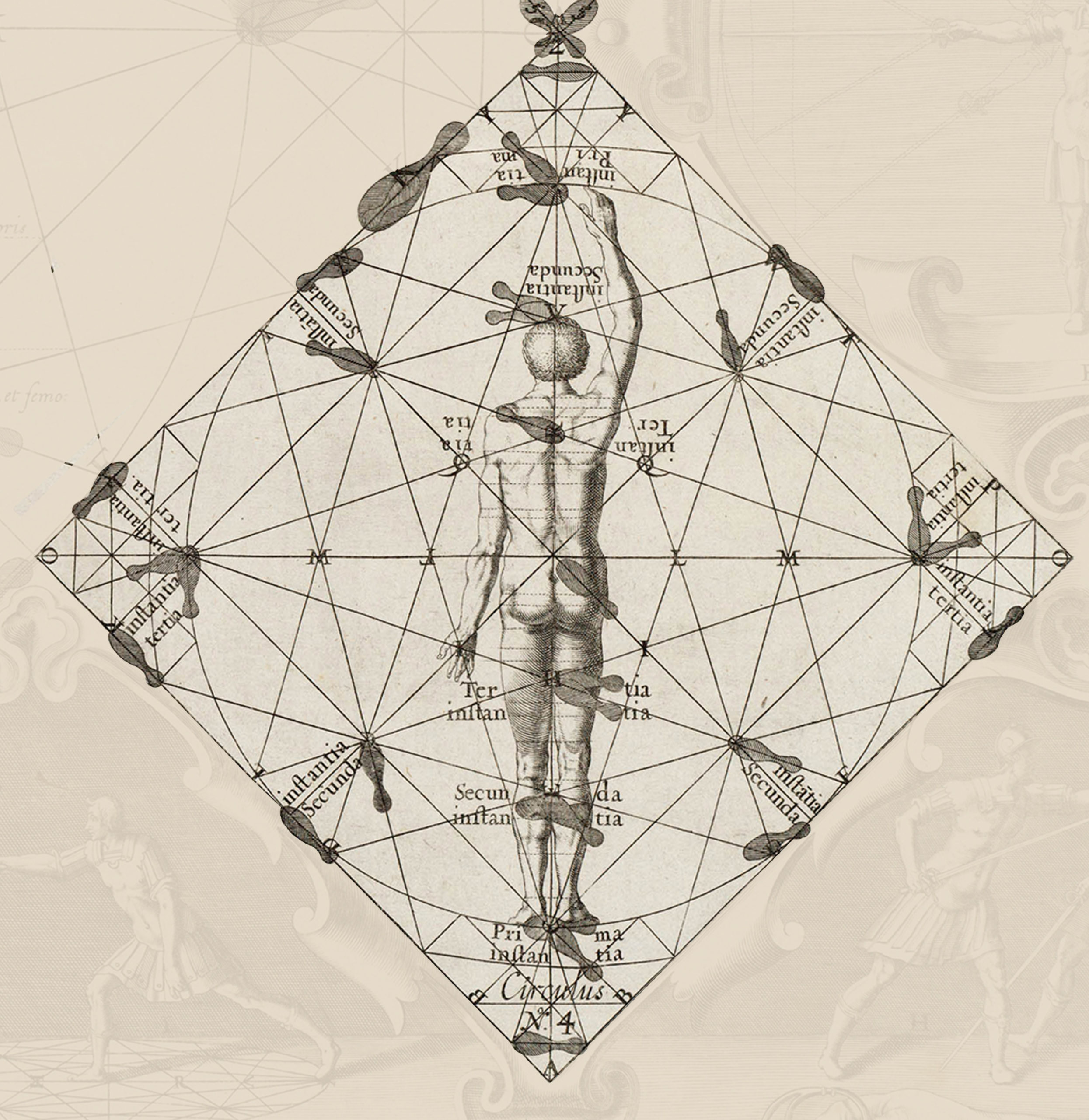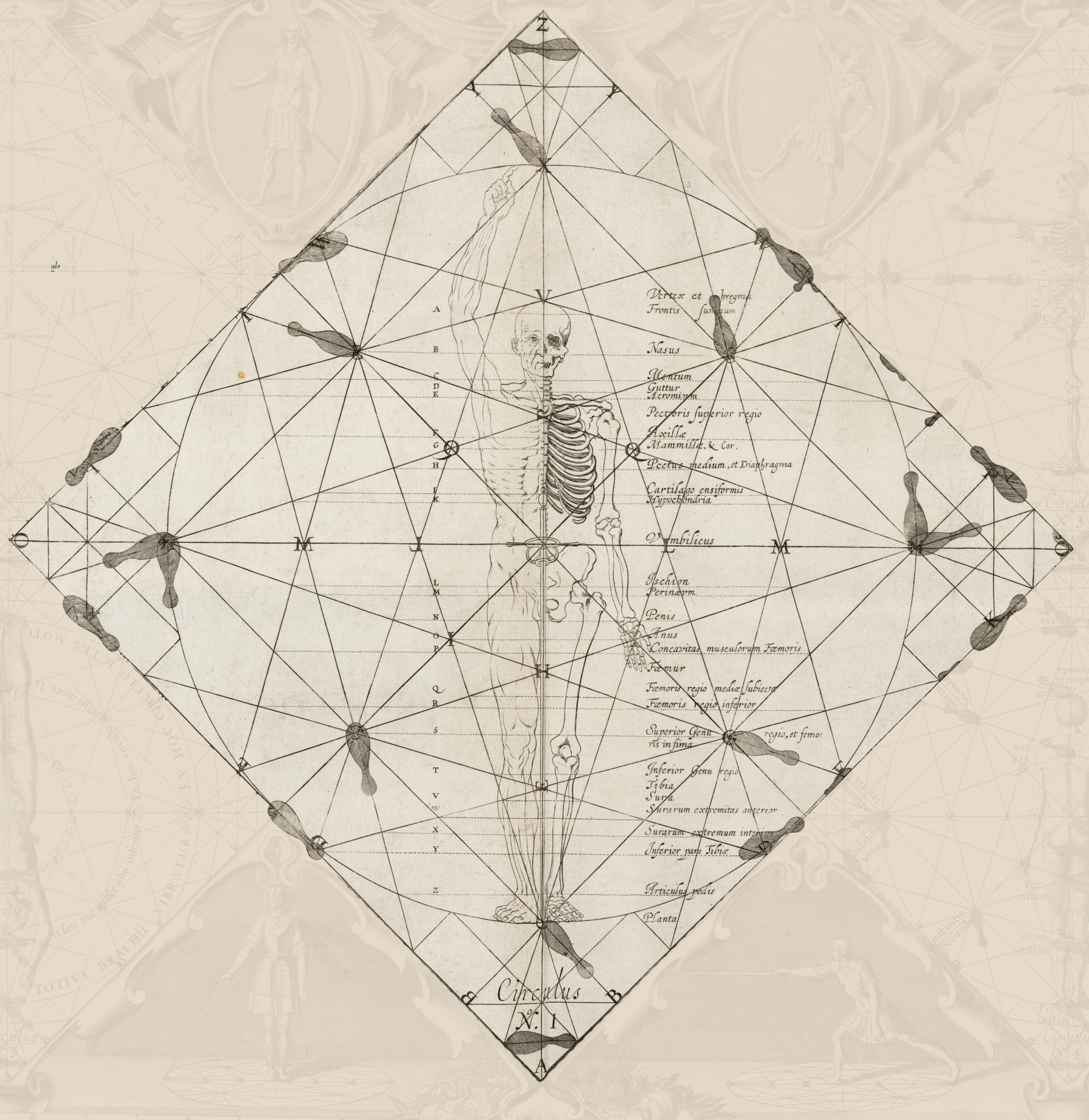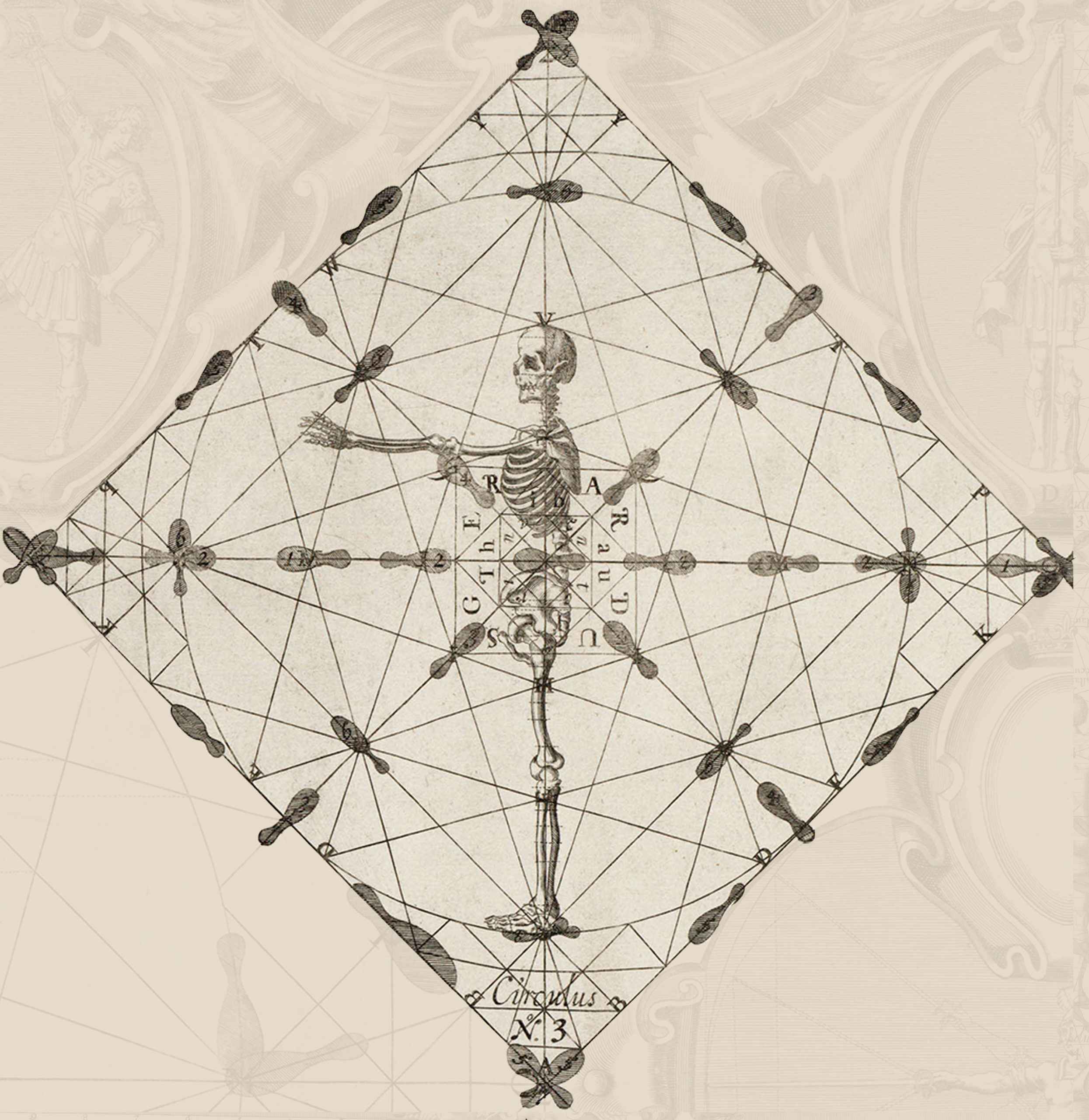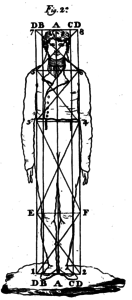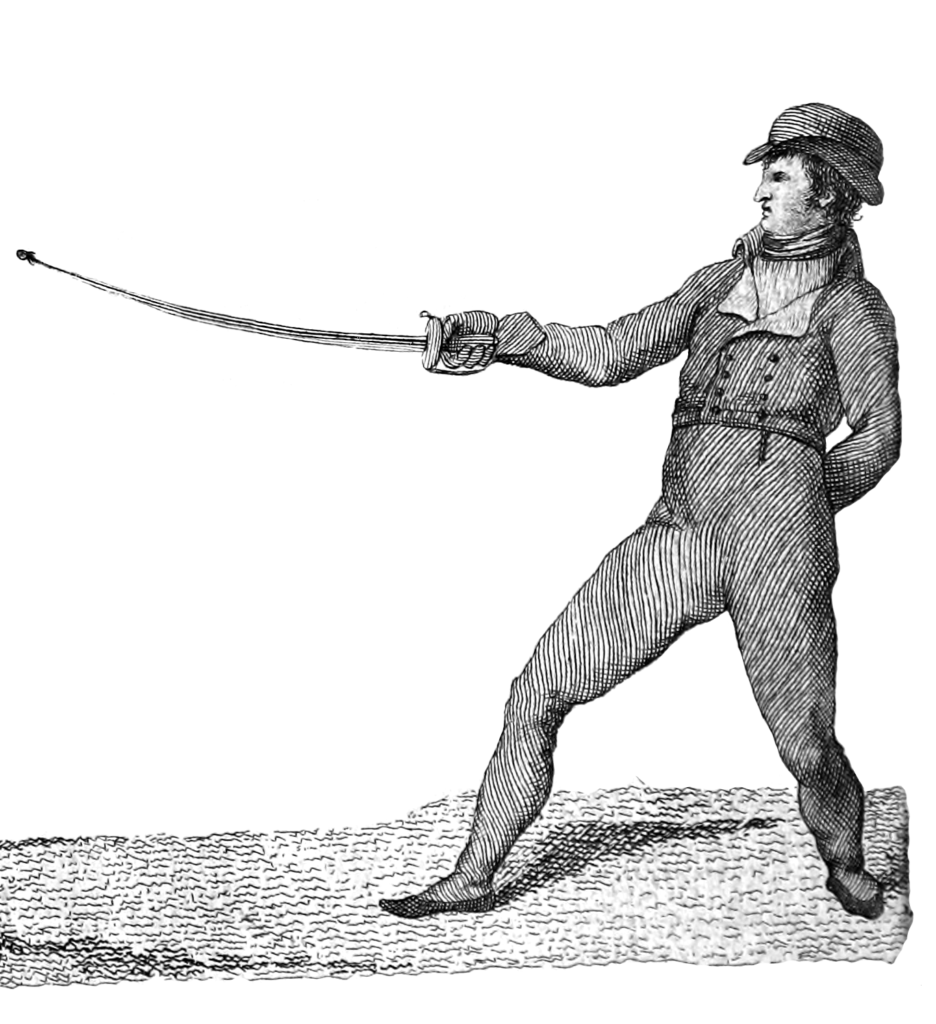437. The consideration of an enemy who, instead of his right hand uses the left, is intimately linked to that of many variations for both offense and defense. If the correct use of weapons was an accidental invention, perhaps we would not encounter so many differences and difficulties in this part. But, since there is nothing in this principles other than a chain of geometric demonstrations, it is necessary to vary the points where the lines take their origin and, varying also with respect to their placement, considered in reason of the battle, it equally alters the order of operations.
438. The combination or meeting of the sabres in every repaired offense forms four angles, of which two are acute, and two obtuse, seen in this way. Consider two right handed fencers who, placed in distance, one throws a thrust of fourth which the opposite repairs with the removal of the same number. In this case, the one who threw the thrust has the point of the enemy sabre about one foot outside of his right shoulder, forming an acute angle with his at the point where they touch, to pass to the strong of the enemy’s weapon, and of his, to form an obtuse one on the outside. The first is called the exterior as it is found on the outside. The second is interior for the opposite reason.
439. If you look at the angles of the one who repairs in terms of their interior and exterior parts, you will see that their interior angles are acute, and the exterior obtuse. Then, the acute of one combatant corresponds to the obtuse of the other. In the example given, the exterior of the shot is acute and the exterior of the removal is obtuse. This is a general circumstance in all offenses repaired on the inside, and is reversed when repaired on the outside.
440. One of the fundamental rules of the skill is that the line of offense, which should be straight, has to be cut by a diagonal and that this is much more defensive the less acute the angles are that form this section. Hence, the greater security in the removals that are made right hand to right hand in the offenses attempted on the inside, because the interior angle that is formed in these removals must be of enough degrees that it is sufficient for the body of the defender to fall within it. Then, the angle at which the removal is to be placed, without including the extension of the body within it is unsafe.
441. When a battle is made between a right-hander and a left, the acute angle of the one does not correspond to the obtuse of the other. For this reason, it is necessary when one fights with a left hander, to always ensure that the body remains, when an offense is executed and repaired, corresponding to the obtuse angle, but as this cannot be carried out except when the offenses are directed to the outside of the left hander, have great care not to attempt, except in very urgent cases, any offense from the inside to an enemy of this nature.
442. As the left-hander, when they are in a fight, opposes their left collateral to the right of the right-hander, it happens that, by throwing a thrust to the inside line, the two acute angles that the weapons form in the removal, are made up of the interiors of the two combatants. That is to say, the point of the attacker and the guard of the repairer form the opening of the angle which must fit the left hander who removed. And their point, and the guard of the right hander form one that has to enclose the shooter. But, since this opening is formed by the left hander with its point in the removal, it can be narrowed down so much that It does not have the ability to contain the right hander. Consequently, their removal is equivalent to a timed blow.
443. The removal that the left-hander forms to the attempted offense to the outside is made in profile and, for this reason, they can enclose their body in much less space than that required by the right-hander, who must move square to offend. From this comes the insecurity of the shots that are executed to the left-hander’s inside.
444. The reason for this difference is that, in the fight of two right-handers, the acute angles that the weapons form are disposed such that the one is interior and comprehensive of one of the two fighters, and the other exterior and located outside of the planes of the other. Not so with the left-hander, since in this it is accomplished such that when he is left inside the angle, the same happens to his opponent, and for them to have the external acute angle, another is needed on the left. But, as in this case, the narrowness of the angle is not harmful and favors the offense of the left-hander, you should always look for it. Then, you should never shoot to the inside.
445. In consequence of what has been said, I should warn the right-hander for greater security, that the thrusts which are to be thrown to the left-hander, are always by the sabre and on their outside, leaving the line by the left side, profiling Even when it is necessary to free to this part after having done so, add the enemy weapon to inflict the offense. Note also that when the left-hander is determined not to assert themselves in any other guard except common or third, with the intend to not give any points other than those on the inside, in the first case, take the weapon on this side, as if you were trying to throw third by the sabre, and take advantage of the doctrine of carrying from one removal to another with offense. In the second case, join the weak of your own sabre to the strong of the other on the outside and graduate, throwing a thrust of fourth by the sabre. If the left-hander, noting this, no longer gives the weapon for your offense, wait for the shot and, in response, offend in any of the ways mentioned above.
446. It may at some point be important to conclude against the left-hander and, for this, it is necessary to do it on the shot, mainly if the removal is to be made on the inside by the right-hander. For, in this removal, holding the weapon down, the point of your sabre is in the disposition to prevent him from passing his right foot in front of his left, narrowing the distance so as to send to the arms the decision of combat. With the same object, take great care not to enter with the left foot to conclude.
447. For the right-hander who has learned these warnings, it will be easy to apply against the left-hander all of the doctrine that suits you, for the only advantage that they boast is to have always fought with right-handers, by which virtue they must have more practice with them than those have with left-handers. But, not having more knowledge, they will know that skill, prudence, and valor compensate advantageously. So I will conclude this chapter by encouraging the presence of fortitude and prudent reserve.

